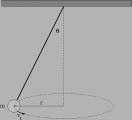
Motion Mountain
by Christoph Schiller
Publisher: motionmountain.net 2011
Number of pages: 1342
Description:
How do objects and images move? What is motion?
How does a rainbow form? Do time machines exist? What is the maximum force value found in nature? Is the universe a set? Which problems in physics are still unsolved?
Free physics textbook that tells the story of how it became possible, after 2500 years of exploration, to answer such questions. The book is written for the curious: it is entertaining, surprising and challenging on every page. With little mathematics, starting from observations of everyday life, the text explores the most fascinating parts of mechanics, thermodynamics, special and general relativity, electrodynamics, quantum theory and modern attempts at unification. The essence of these fields is summarized in the most simple terms.
Download or read it online for free here:
Download link
(multiple PDF files)
Similar books
 College Physics
College Physics- OpenStax College
This introductory, algebra-based, two-semester college physics book is grounded with real-world examples to help students grasp key, fundamental physics concepts. It includes learning objectives, concept questions, and ample practice opportunities.
(25588 views)
 Conceptual Physics
Conceptual Physicsby Benjamin Crowell - Lightandmatter.com
Conceptual Physics is a nonmathematical physics textbook, dealing with conservation of mass and energy, conservation of momentum, conservation of angular momentum, relativity, electricity, fields, the ray model of light and waves.
(58754 views)
 Introductory Physics I
Introductory Physics Iby Robert G. Brown
A free textbook for Newtonian mechanics, waves and oscillations, and thermodynamics. This text is intended to be used in the first semester of a two-semester series of courses teaching introductory physics at the college level.
(20762 views)
 Essential Physics 1
Essential Physics 1by Frank W. K. Firk - Archive.org
Introduction to classical and special relativity, Newtonian dynamics and gravitation, Einsteinian dynamics and gravitation, and wave motion. This is a book for first-year college students who have an interest in pursuing a career in Physics.
(21512 views)